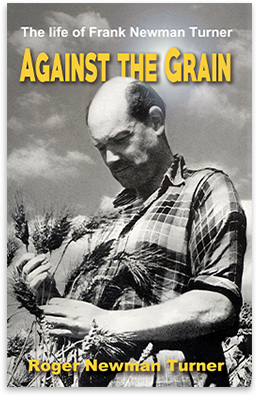
Lawrence D. Hills and 'The Great Comfrey Race'

Lawrence d. Hills with his Russian Comfrey
(Photo courtesy Garden |Organic)
Lawence D Hills (1911-1990) was a renowned horticulturalist and writer. He was a specialist in alpines who wrote for The Observer newspaper and magazines such as Punch and The Countryman. He was also a regular contributor The Farmer, - one of the UK's first organic farming journals, “ published and edited from the farm” by F. Newman Turner - and it was through the medium of this that he pursued his enthusiasm for the promotion of Russian
Comfrey (Symphytum peregrinum or S. uplandica) as a fast-growing fodder crop for livestock and a soil-enriching mulch for gardeners and farmers by virtue of its deep-rooting form which draws up vital minerals from the subsoil.
Although wild comfrey (S. officinalis) was well-known in the herbal materia medica for several hundred years as a poultice and wound healer (its common name is 'Knitbone'), Hills discovered that Russian comfrey had only been introduced to the UK in around 1875 by a Quaker smallholder in Essex named Henry Doubleday(1810-1902). At his own smallholding in Bocking, near Braintree, Essex Hills developed a sterile strain of Russian comfrey, which he named Bocking 14, and supplied plants to farmers as far afield as Canada and Central Africa. The Bocking 14 hybrid had the advantage of not running to seed yet retaining its nutritional properties.
Hills was its champion as a rich source of protein and minerals for farm animals such as cattle, horses, and pigs. (Its reputation has been only slightly dented by the discovery that its Pyrrolizidine alkaloids can be damaging to the liver of pigs if consumed for long periods)
Some important qualities of Russian Comfrey (S.peregrinum)
· it is fast-growing and yields several cuts per season;
· in temperate climates, it can be harvested repeatedly from April to November;
· it is deep-rooting when established and resistant to drought;
· it is rich in potash and a good source of protein for livestock.
As demand for Russian comfrey was increasing, Newman Turner conceived the idea of an international competition to record the yields of its growers. 'The Great Comfrey Race' was announced in the Spring 1954 edition of The Farmer and Hills reported on its progress in subsequent issues. As described by him in his autobiography, Fighting Like the Flowers (Green Books, 1989), the eventual winner was a grower in Zimbabwe who had achieved an annual yield averaging 100 tons an acre over 17 years. (Being near the equator he was able to take cuts round the year.)
Determined that his work on comfrey should not be lost, Hills founded The Henry Doubleday Research Association (HDRA) in 1954 and invited F.Newman Turner to become its first president (which he remained until his premature death ten years later). The HDRA later became Garden Organic, one of the world's largest member organisations promoting organic horticulture.
RNT
November 2022
You can read more about Lawrence D. Hills and The Farmer in Against the Grain: The life of Frank Newman Turner (2022) available from Austin Macauley Publishers, Amazon, and leading booksellers, or from AcresUSA, Greely, Colorado.
Fighting Like the Flowers: The life story of Britains best-known organic gardener is published by Green Books, Bideford, Devon.
Post Views : 328